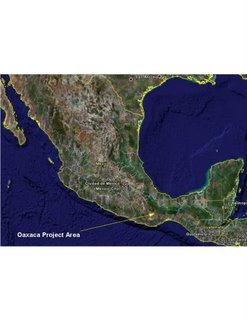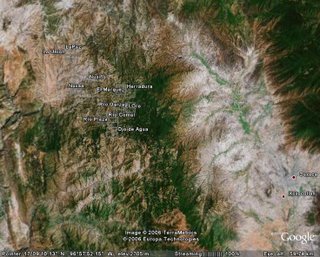There doesn't seem to be one clear answer here. According to the US National Park Service
http://www.nps.gov/seki/shrm_pic.htm the largest tree in the world is the General Sherman Giant Sequoia (Sequoiadendron giganteum). This claim appears to be based on volume, the General Sherman having a volume of over 52,000 cubic feet. The Arbol del Tule, ahuehuete (Taxodium mucronatum) makes the claim based on a diameter of over 14m, at least 3 m more than the General Sherman. The Arbol del Tule is also claimed to be largest based on biomass.
As if that wasn't confusing enough, some people make the argument that a poplar clone might be even larger than either of these, since a grove of poplars can all be sprouted from the same root, genetically identical, and therefore all part of one tree, technically. If you subscribe to this assertion, then many poplar clones would excede either of the above.
What's more, the claim of world's largest organism may go to a fungus in Oregon, which covers an area of almost 10 square kilometres and would exceed any sequoia or ahuehuete both in volume, diameter and mass.
So take your pick. Anyone who can shed further light on this is welcome to comment below. I will personally try to bring back pictures of said ahuehuete during my trip.
Saturday, June 17, 2006
Thursday, June 15, 2006
v3#6
Where am I: Canada
Where am I going next: Oaxaca, Mexico
For how long: 1 week
To do what: Meet with local staff there, learn more about their program, discuss and plan ideas for new innovations and projects.
Safety issues: A massive teachers strike in Oaxaca City has resulted in violence between police and protesters and shut down the city centre. Our project areas are, as usual, outside the city, so this will not be as much of a concern.
Background: Oaxaca is one of the most indigenous areas of Mexico, probably at least partly because of geography. It is a rugged mountainous area, and less accessible which has historically resulted in less outside interaction. There are still large forested areas, although the deforestation rate is rapid. Large portions of the population rely almost exclusively on charcoal making as a livelihood.
The world's largest tree a ahuehuete (a cypress species) is located 10km east of Oaxaca city.
Photo is map showing location of Oaxaca province and our project area.


Where am I going next: Oaxaca, Mexico
For how long: 1 week
To do what: Meet with local staff there, learn more about their program, discuss and plan ideas for new innovations and projects.
Safety issues: A massive teachers strike in Oaxaca City has resulted in violence between police and protesters and shut down the city centre. Our project areas are, as usual, outside the city, so this will not be as much of a concern.
Background: Oaxaca is one of the most indigenous areas of Mexico, probably at least partly because of geography. It is a rugged mountainous area, and less accessible which has historically resulted in less outside interaction. There are still large forested areas, although the deforestation rate is rapid. Large portions of the population rely almost exclusively on charcoal making as a livelihood.
The world's largest tree a ahuehuete (a cypress species) is located 10km east of Oaxaca city.
Photo is map showing location of Oaxaca province and our project area.


Subscribe to:
Comments (Atom)